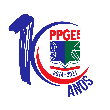Banca de DEFESA: GISLAINY FERREIRA FERNANDES
Uma banca de DEFESA de MESTRADO foi cadastrada pelo programa.STUDENT : GISLAINY FERREIRA FERNANDES
DATE: 11/07/2022
TIME: 14:00
LOCAL: Ambiente virtual Meet
TITLE:
ACCESSIBILITY POLICIES FOR THE DEAF IN EDUCATION SUPERIOR: An analysis at the Federal University of western Pará - UFOPAKEY WORDS:
Accessibility. Accessibility policies. Deaf Education. University education.PAGES: 155
BIG AREA: Ciências Humanas
AREA: Educação
SUBÁREA: Tópicos Específicos de Educação
SPECIALTY: Educação Especial
SUMMARY:
This dissertation is linked to the Study and Research Group on Deaf Education (GEPES) of the Federal University of Western Pará (UFOPA). Its general objective is to investigate the process of implementation of accessibility policies for deaf students at the Federal University of Oeste do Pará-UFOPA in Santarém-PA. From it, the specific objectives are unfolded: a) To analyze the ordinances, resolutions, laws, annual activity reports, public policies and all documents that support inclusion in UFOPA; b) Know the accessibility resources available for deaf students at that university; c) Describe the role of the Accessibility Center for deaf students at the researched university; d) Identify the greatest difficulties that UFOPA faces in implementing accessibility policies for deaf students. Therefore, I use the ideas of the Historical-Cultural Theory on human development, especially the concepts of environment, culture and language L. S. Vygotski (1997; 2018a; 2018b). With regard to the methodological dimension, I use Qualitative Research based on a documental survey and interviews (LUDKE and ANDRÉ, 1986). The main documents used for the analysis are: Ordinances, laws, resolutions, projects, annual reports of activities and public policies; the semi-structured interview will be carried out with 2 categories: Coordinator of the Accessibility Center and the University Dean. In addition, I will use theoretical contributions to analyze the data produced: Carvalho (2010), Duarte (2013), Leontiev (1978), Vygotsky (1984) to contribute to the 4 subsections of chapter 4 Accessibility in Ufopa:Deaf students at the Federal University of Oeste do Pará; Accessibility Policies implemented at UFOPA; Performance of the Accessibility Center and Activities and events promoted by the Accessibility Center at UFOPA. As partial results in relation to deaf students at UFOPA, there was a large increase in deaf students in higher education, accounting for 26% of the total number of students with disabilities enrolled in the institution. Regarding the accessibility policies implemented at Ufopa, it was found that the institution has some affirmative policies that act on the permanence of deaf students; in the subsection of the Accessibility core's performance, it was observed that the core works with the elaboration of ordinances aimed at the social inclusion of deaf students through events, courses, and projects that address their language. The final result of this investigation can be used as a reference and foundation for further research in the area of deaf education, as well as serving as a pedagogical subsidy to guide other universities. Finally, I believe that the relevance of this study lies in the possibility of advancing the reflection on accessibility policies for deaf students in the university context.
BANKING MEMBERS:
Presidente - 1797078 - ELENY BRANDAO CAVALCANTE
Interno - 1776813 - LUIZ PERCIVAL LEME BRITTO
Externa ao Programa - 1713679 - EDNEA DO NASCIMENTO CARVALHO
Externa à Instituição - LUCELIA CARDOSO CAVALCANTE RABELO - UNIFESSPA




